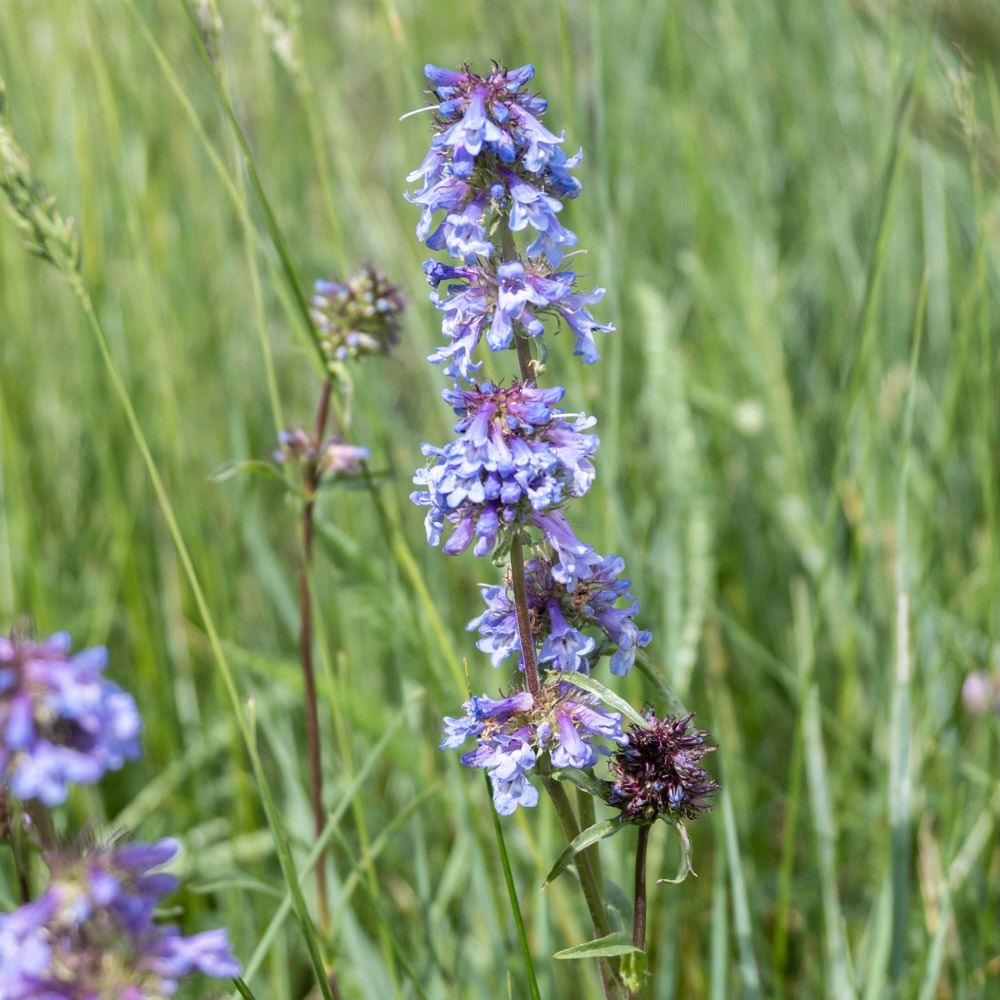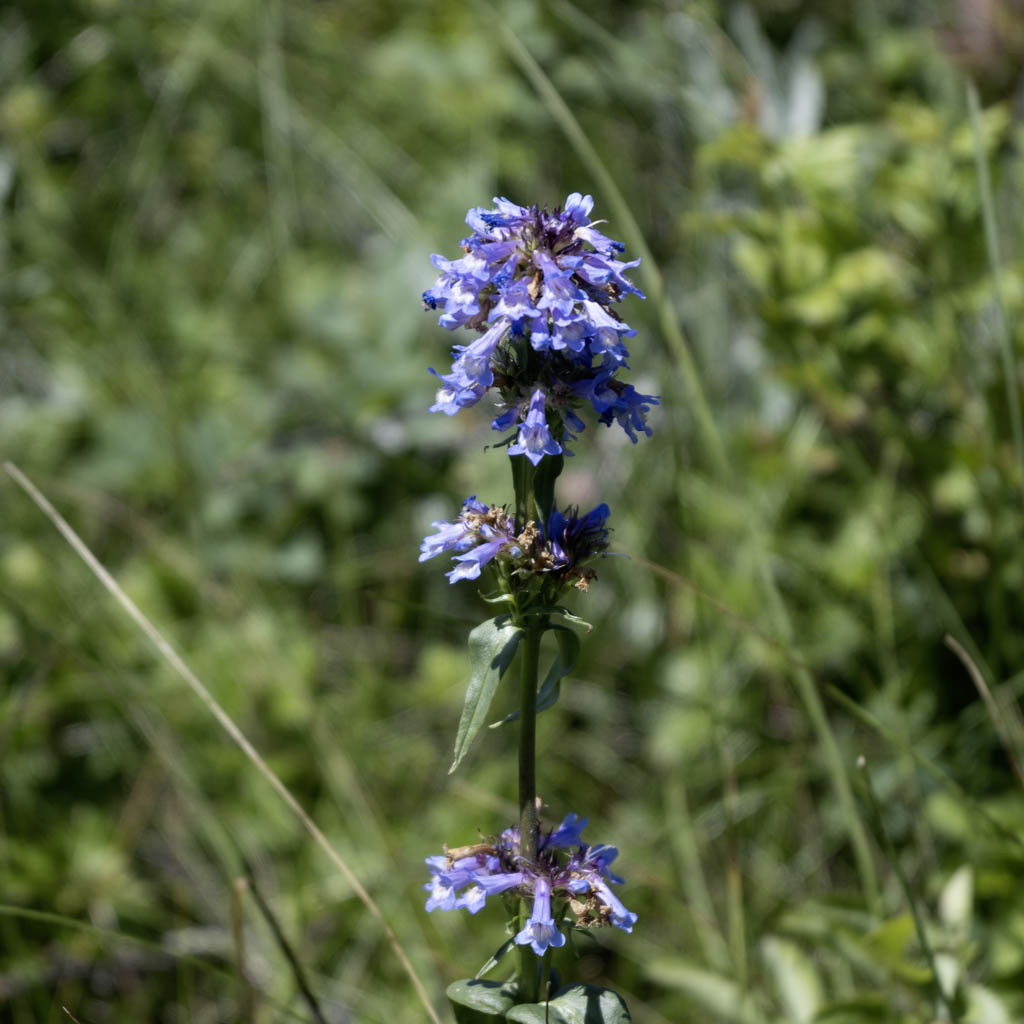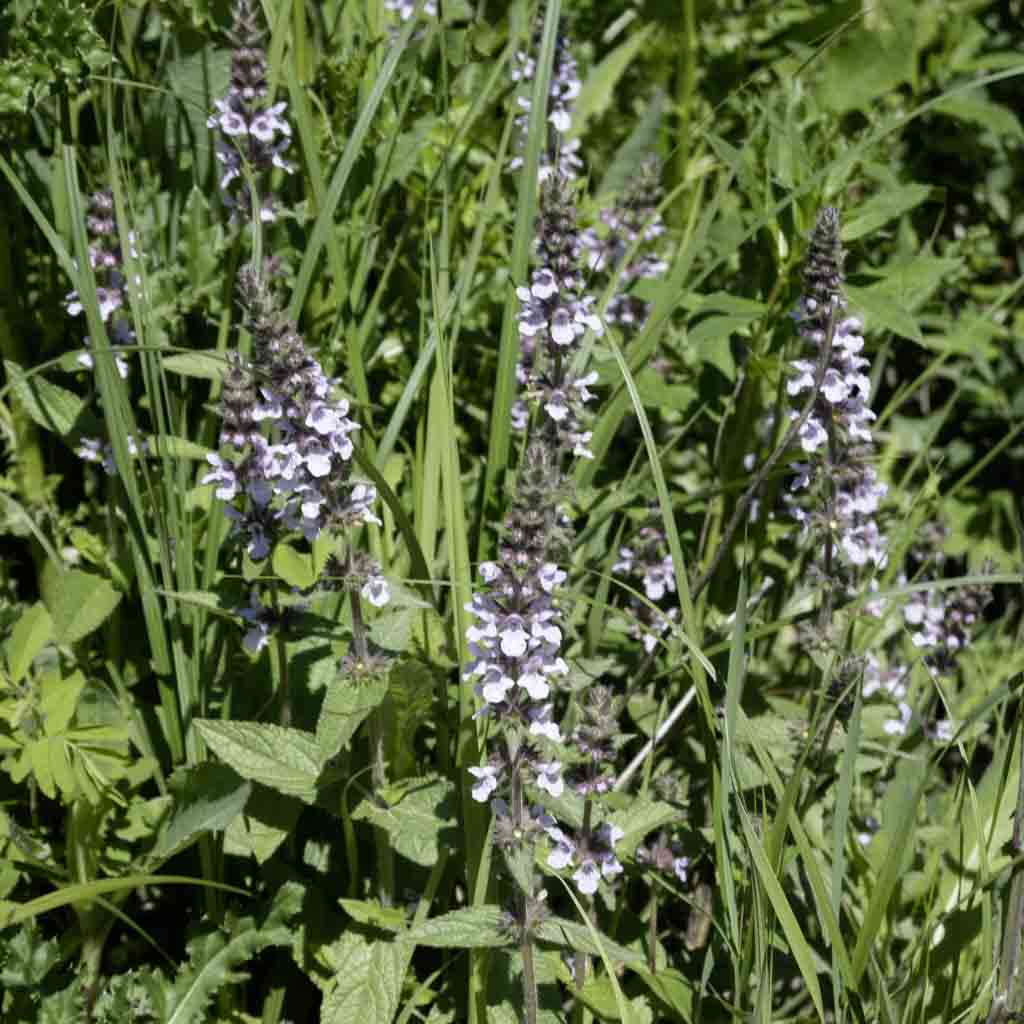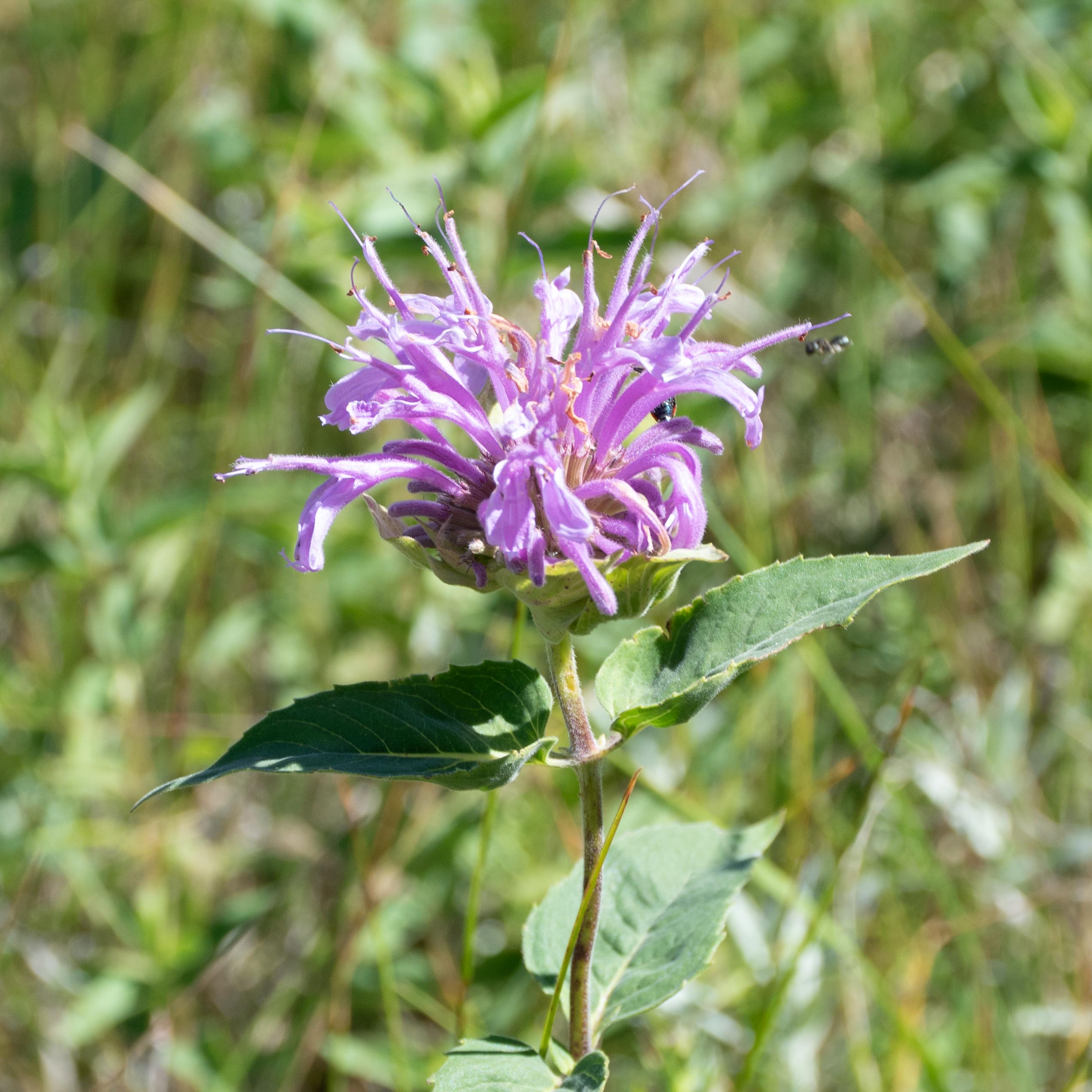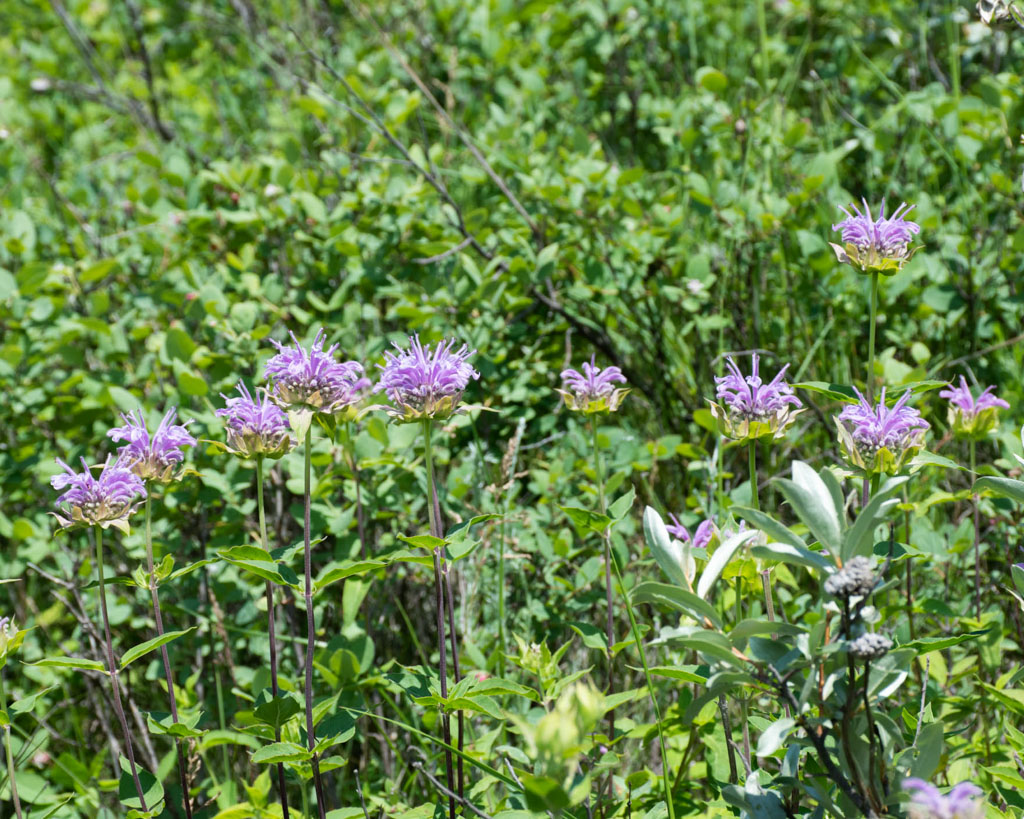Alberta has at least twelve species of beardtongues (Pentstemon) in various colours, sizes, and range.
The Slender Blue Beardtongue (Pentstemon nitidus) is a 4 to 12 inch plant that features bands of densely-packed tiny flowers bright blue in colour with a tinge of purple at the stem end. Up close, the tubular flowers look like little blue trumpets.
On the trail, you will find Slender Blue Beardtongue growing in colonies along the edge of a woodland or in a damp meadow. They bloom from June through August.
Waskahegan Field Notes
From a distance, a mass of Slender Blue Beardtongues look like sapphires on stems. The brilliant blue with purple always grabs everyone’s attention and curiosity.
We have found the greatest variety of beardtongues on the Stoney Creek trail, including the lilac-coloured flowers below.
Sources
- Linda Kershaw. Alberta Wayside Flowers.
- R.G.H. Cormack. Wild Flowers of Alberta.
- F.R. Vance, J.R. Jowsey, J.S. McLean. Wildflowers Across the Prairies.
